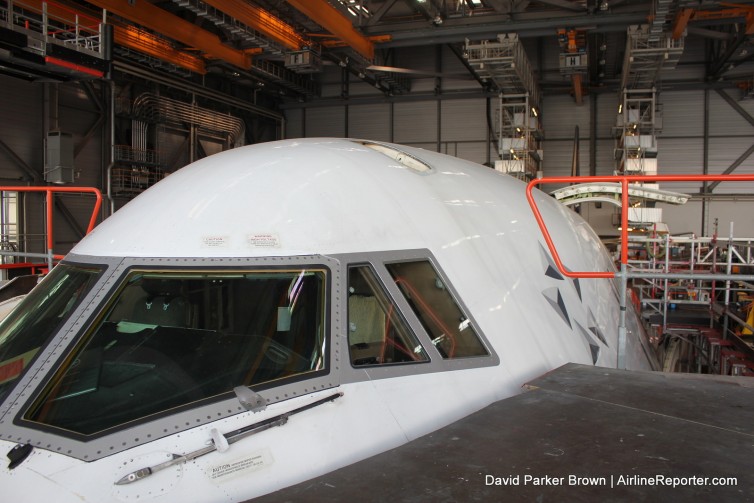
Not an angle that one sees often of a Boeing 747-400
“We actually don’t do that work here. For that kind of thing, we have to ship it out to Lufthansa Technik in Germany.” If you talk to a great number of airline maintenance employees around the world, you’ll probably hear that line a few times. Many airlines are capable of doing their own aircraft maintenance, but few locations in the world take MRO (Maintenance, Repair, and Overhaul) to the level Lufthansa Technik does.
Airlines around the world send their aircraft to Technik for jobs ranging from a mandatory C check to a nose-to-tail cabin refurbishment. Recently, I was invited to tour Technik’s facilities in Hamburg, Germany, which is just one of their multiple full-service locations around the world.
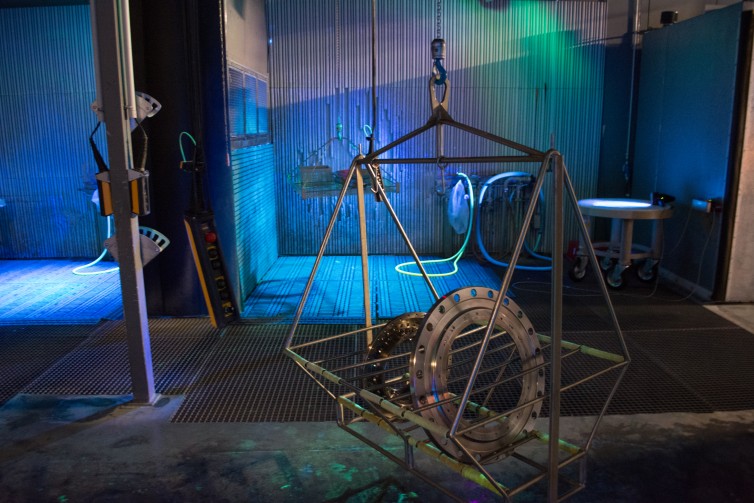
One of the black light inspection areas in Lufthansa Technik Engine Shop – Photo: Jason Rabinowitz
Our first stop on the Engine Services center. Engines are, by far, some of the most expensive parts on any aircraft. Most airlines perform only minor maintenance on their engines, but in the Engine Services center, several engines were completely torn down for a total rebuild.
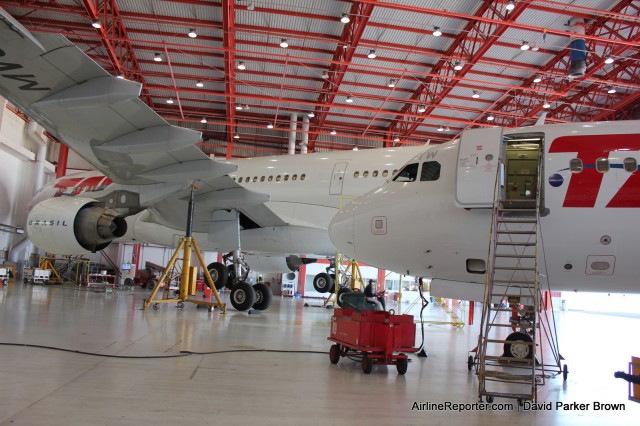
A TAM Airbus A330 and A320 get worked on at the MRO
The location of TAM Airlines’ Maintenance Operation Center (called “MRO” for Maintenance, Repair, and Overhaul) is in a unique location. It is not found at a major airport or even within a large city. It is located about three hours (by car) northwest of Sao Paulo (GRU) in the middle of farm land.
The facility used to be a tractor factory, with a runway built next to it to fly in the company’s parts. Turns out building your own airport and flying in parts, rather than shipping them via road, was not the best business decision and the tractor company went out of business.
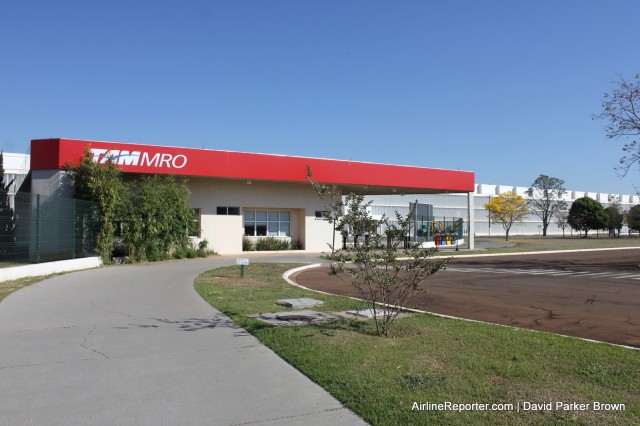
TAM’s maintenance facility is located about 15 miles from Sao Carlos
TAM saw this as a great opportunity to purchase the land and open their MRO. Large facilities already existed and, more importantly, a runway. So just over a decade ago, TAM opened up their MRO about 15 minutes north of Sao Carlos, a town of around 220,000. I was recently invited to check out the facility, and it was a semi-adventure just getting there.
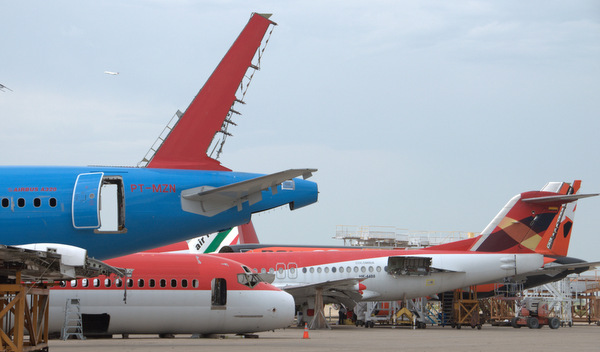
Former TAM A320 seen in blue. Two former Avianca birds, an MD-83 and a Fokker F100. Photo by JL Johnson
This is the first in a series of posts I have planned with a focus on the Midwest’s impact on aviation. Dismissed as flyover country by some, much of aviation’s history occurred right here in the middle of the US. It’s not just the past we will be exploring- the Midwest is very much involved in aviation today, and is well positioned to support the evolution of aviation in the future. Join me as we explore the facets of aviation, right here from the heart of America.
What is Jet Midwest? They are a full service MRO (maintenance repair overhaul) firm that is also involved in the purchasing, painting, leasing and recycling of planes.
When Jet Midwest buys planes they are overhauled, leased and/or sold, or parted out. It’s a sad day when a flying machine meets its demise. However, at Jet Midwest, through the sacrifice of one plane, dozens or hundreds more across the globe are able to stay in service. Their motto for what they do: ’œParts to Planes.’
I was recently invited out to tour their huge facility on the southeast corner of the Kansas City International Airport property. The 2.4 million square foot facility, formerly of American Airlines and before that TWA, has hangars that can store multiple 747s, with many more narrow bodies between.




